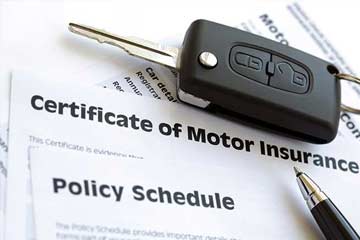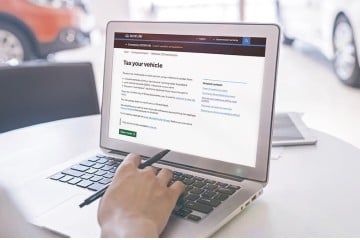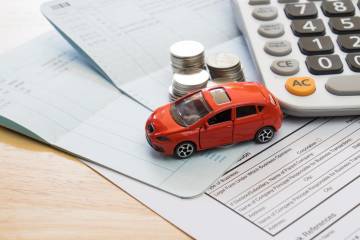"For new drivers who often pay the highest prices for insurance, it's especially important to be clued up on practical changes you can make to bring your insurance costs down. Understanding how the car you choose to drive and the insurance group it sits in can have an impact is a great place to start."
- Home
- Car insurance
- Car insurance groups
Car insurance group checker
Find out what car insurance group your vehicle is in
What insurance group is my car in?
Car insurance group checker
The car
Insurance group
Group
9/50
To check which insurance group your car is in, pop in your car registration.
Don’t have it handy? No worries – just search for your car's make and model. Once we’ve found your car, we’ll show you its group and share a bit of info about other cars in the same group.
Compare car insurance quotes
How do car insurance groups work?
All cars fall into 1 of 50 insurance groups.
Generally the higher the group your car sits in, the more you pay for your insurance. This is because cars in higher groups are seen as ‘riskier’ to insure.
What group your car sits in depends on things like:
- Its overall value: More expensive cars sit in higher groups.
- Any security features it has: Cars with anti-theft features usually sit in lower groups.
- How much it costs to repair: The more it costs to fix your car, the higher the group your car is likely to sit in.
- Its top speed and acceleration: Faster cars run a higher risk of being involved in a collision, and sit in higher groups as a result.
- What safety features it has: Things like ABS brakes lower a car’s chances of being involved in a crash. The safer the car, the lower the group it sits in.
Examples of cars that fall into groups 1 - 50 include:
| Group | Make and model |
|---|---|
|
1
|
Hyundai i10, Volkswagen Up!, Kia Picanto, Citroën C1
|
|
2
|
Ford Fiesta, Vauxhall Corsa, Renault Clio, Toyota Aygo
|
|
3
|
Mazda 3, Ford Focus, Honda Civic, Volkswagen Polo
|
|
4
|
BMW 1 Series, Audi A3, Mercedes A-Class, Toyota Corolla
|
|
5
|
BMW 3 Series, Audi A4, Mercedes-Benz C-Class, Range Rover Evoque
|
|
10
|
Porsche 911, BMW M4, Tesla Model S, Range Rover Sport
|
These are just examples of cars in different insurance groups. Even different versions of the same model can sit in different groups, depending on things like the year, trim, engine size, performance, and repair costs.
Our group checker tool makes it super simple to find out exactly which group a car is in, just enter the registration number.
What does ‘E’ stand for in my car insurance group?
If you spot an ‘E’ after your car’s insurance group number, like 10E, it means the car ‘exceeds expectations’. In other words, it has a better security rating than required for that group. This can lead to the car being placed in a lower insurance group, which could mean cheaper car insurance quotes.
Sometimes, you’ll notice other letters next to insurance group numbers. These letters, like ‘E’, can affect the insurance cost:
- D = Doesn’t meet requirements – The car falls short of the group’s security standards, which might bump it into a higher group
- A = Acceptable – The car’s security meets the group’s standard requirements
- P = Provisional – The car’s group rating is temporary, as full data wasn’t available at launch and awaits an update
- U = Unacceptable – The security level isn’t up to scratch
- G = Grey import – The car’s an import, so it can’t be rated. Group ratings are only for cars built for the UK market
Who decides the groups?
The groups themselves are defined by a collection of insurance industry experts known as the Group Rating Panel. This includes members of the Association of British Insurers, Lloyd's Market Association and the insurance research centre, Thatcham.
The panel looks at over 125 data points, and uses these to define the parameters of each group.
These include:
-
Repair cost: How long it typically takes to repair a vehicle, and how expensive those repairs tend to be
-
Complexity of design: How complex a vehicle is, and how difficult it is to repair as a result
-
Performance: The max speed and acceleration of a vehicle
-
Security: What security features a vehicle has
-
Value: The price tag of a vehicle when bought new
-
Safety: What safety features a vehicle a has, which includes things like ABS and airbags
The panel then assigns a group rating to each car produced.
Insurance group 50 is the highest risk category. Cars end up in this group for a few reasons:
What’s the average insurance cost for each group?
Generally, the higher your car’s group, the more you pay to insure it. But there are exceptions.
Our data show that the average price for groups 1-5 is actually higher than groups further up the scale.
There may be reasons for this though, such as the fact that younger drivers tend to buy cheaper cars. These cars sit in lower insurance groups and should be cheaper to insure. But as young drivers tend to own them they tend to pay above the average for their insurance. This means the ‘average’ cost to insure them appears higher than groups further up the scale.
Despite this, being aware of how your car insurance is calculated, and how your car’s group fits into that, is still worthwhile.
With this in mind, here’s the average costs of car insurance for each group*:
| Group | Average cost |
|---|---|
|
1
|
£1,213
|
|
2
|
£1,283
|
|
3
|
£1,150
|
|
4
|
£1,179
|
|
5
|
£969
|
|
10
|
£719
|
|
20
|
£710
|
|
30
|
£966
|
|
40
|
£1,036
|
|
50
|
£1,563
|
*Confused.com data, August to October 2024.
Will my car’s insurance group change over time?
In many cases, yes. As your car ages, the parts needed to fix it may become cheaper. It’s also likely to drop in value. This means it’s likely to fall into a lower group the older it gets.
Electric cars are a good example. As they currently cost a fair amount to repair, they tend to sit in higher insurance groups. But as they become more common, the cost to repair them is likely to drop, and the groups they sit in are likely to fall likewise.
Are there groups for vans and motorbikes too?
Yes, but they work a little differently.
Pre-2016, there were only 20 groups for vans. This means that vans produced before 2017 fall into one of these 20 groups.
In 2017, a further 30 groups were added. Vans produced after this are split into groups 1-50.
Despite this, van groups work in a similar way to their car counterparts: the lower the group, the lower your insurance costs tend to be.
For bikes, the groups aren’t so well defined, and different insurers use different group definitions. Some split bikes into 17 groups, for example, while others split them into up to 22.
What else affects car insurance?
Other than the insurance group, factors that can affect the cost of insurance include:
- Your age - younger drivers usually pay more for insurance than older drivers, as insurers see them as a higher risk for accidents
- Where you live - if you live in an area with higher crime rates or more road accidents, your insurance costs can go up
- Your driving history - Previous claims or driving convictions on your record can mean higher insurance costs
- Your occupation - some occupations are seen as being more of a risk than others by insurers
- Your no claims bonus - the more years no claims bonus you have, the more discount you'll be offered by insurers
- Your level of cover - Whether you choose third-party only, third-party fire and theft, or a comprehensive policy is likely to affect the cost
What our car insurance expert says
Key takeaways
- All cars in the UK are placed into one of 50 insurance groups
- The groups range from 1 to 50, with 1 being the lowest and 50 being the highest
- Generally, the lower the group, the lower the cost of insurance
- The Group Rating Panel decides the groups, factoring in repair costs, security, safety, value, performance, and design complexity
- The insurance group is one of many factors insurers look at when deciding the cost of car insurance
Get more help with motoring costs, tax and insurance

Car insurance cost calculator
Calculate the average cost of car insurance in your area to see if you are paying over the odds for your cover.

Tax checker
Vehicle Excise Duty (VED) is commonly known as road tax or car tax, Use our free tool to check if your car is taxed.

The cost of driving
Cars are an essential part of everyday life for many. But the cost of driving is increasing and more drivers are struggling to pay to run their cars.

Mileage calculator
Whether it’s the school run, the daily commute or weekend getaways, your mileage can quickly add up. Our mileage calculator helps you work out how far you drive weekly, monthly or yearly.

EV pay-per-mile tax checker
Unsure what the new EV pay-per-mile tax means for you? Pop your mileage into our calculator and get your estimate in seconds.
Types of car insurance
Classic car insurance
Offers cover for owners of classic cars. For insurance purposes, a classic car can be any car that’s older than 15 years.
Business car insurance
Covers you if you use your car for work, including travelling between offices or across the country.
Black box car insurance
Lets you prove you're a safe driver, and save money on your policy, even if you're inexperienced or seen as high risk.


